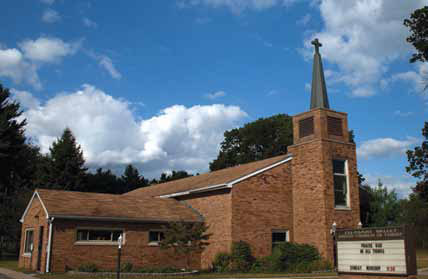House Of Worship Projects Pose Additional Challenges Beyond The Service
- QUICK BIO
- COMPANY: Crown Audio
- HEADQUARTERS: Elkhart, IN
- DESIGN CONSIDERATIONS: The operator is the lynchpin in every house of worship project. An operator that takes ownership and feels involved in the design can be your biggest ally.
The house of worship market presents many unique challenges, regardless of the size of the congregation. The main challenge is that the project is supported by donations, and budgetary constraints are very complex; it is not uncommon for a donor to allocate money for a very specific project and use. These restrictions must be understood. Furthermore, operators are often volunteers of varying skill levels. These operators have as much impact on the success of a project as any of the work that the integrator does. These conditions are boundaries, but the ultimate goal is the same for all projects; make sure the message can be heard.
Defining how to approach house of worship design requires an understanding of the needs and uses of the venue, whether it is a church, mosque, synagogue, or other space. Very often terms are relative and not specific enough to base a design on. One assembly’s definition of a praise band is a piano, acoustic guitar, and vocalist, while another congregation defines it as two electric guitars, one electric bass, one drum kit, a keyboard rig, and five vocalists requiring eight discreet monitor mixes. Understanding the client’s vocabulary and expectations is a key part to creating a successful project. Often the easiest way to determine these items is by attending a service as well as meeting with each stakeholder separately��� not just the project manager.

Thinking about ease of use and consistency will greatly improve the chance of successful operation in a house of worship application.
The microphone selection becomes very important in these projects, as the wrong microphone will impact the gain before feedback. The clergy may say that they do not want a handheld microphone, and so the option becomes a headset or a lavalier microphone. Typically the placement of the headset microphone is much more consistent than a lavalier microphone. In addition it reduces the chances of getting hidden by vestments. Through this simple decision, the likelihood of successful operation is increased. Throughout the project these decisions will present themselves. Constantly thinking about ease of use and consistency will greatly improve the chance of successful operation.
After the completion of many projects, a volunteer operator is placed in front of a mixing desk without sufficient training. Several resources are available to train the operator, but many are passive and the information is not retained. It is much more effective to sit with an operator during an actual service, not a simulated service, and provide active training and real-time coaching.
The operator is the lynchpin in every project. An operator that takes ownership and feels involved in the design can be your biggest ally. An operator that feels ignored by the design team can make any system fail. Typically if the operator is not engaged in the process, they will not take as much pride in the outcome.
One also has to think about the other uses of the building in addition to the main services. Is there a youth service? What are the needs for weddings, funerals, naming ceremonies, bar/bat mitzvahs, confirmations, or other events? The answers to other needs are prime examples of decisions that will impact the overall success of the project. There is more to a good system than just the main service.
Bradford Benn (Bradford.Benn@harman.com) is director, application engineering for Crown Audio, a division of Harman.
